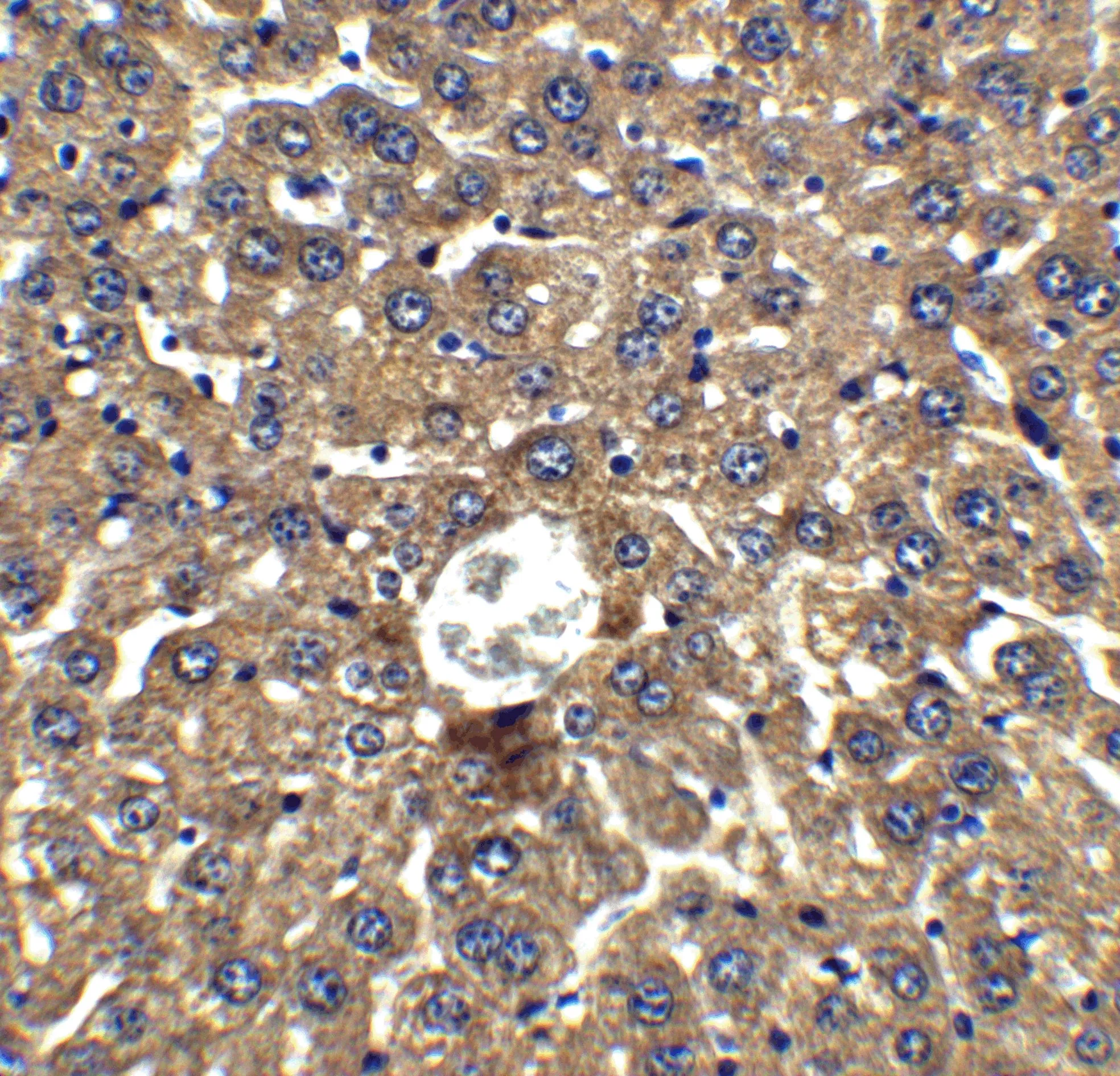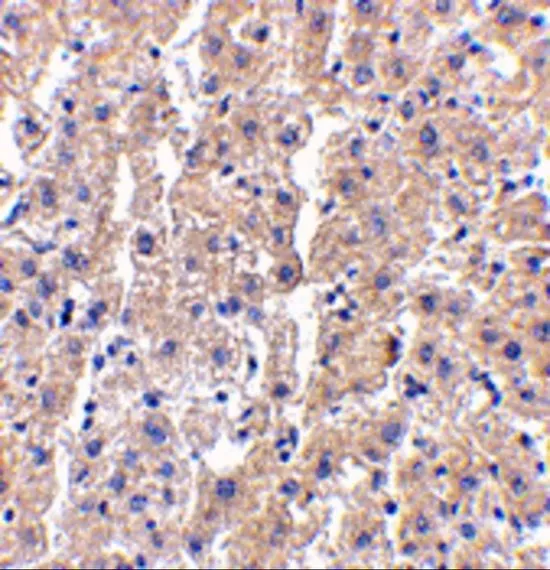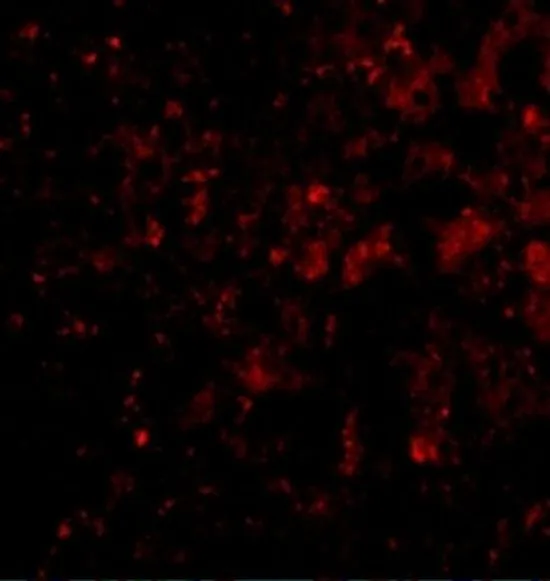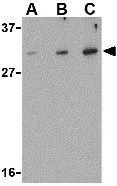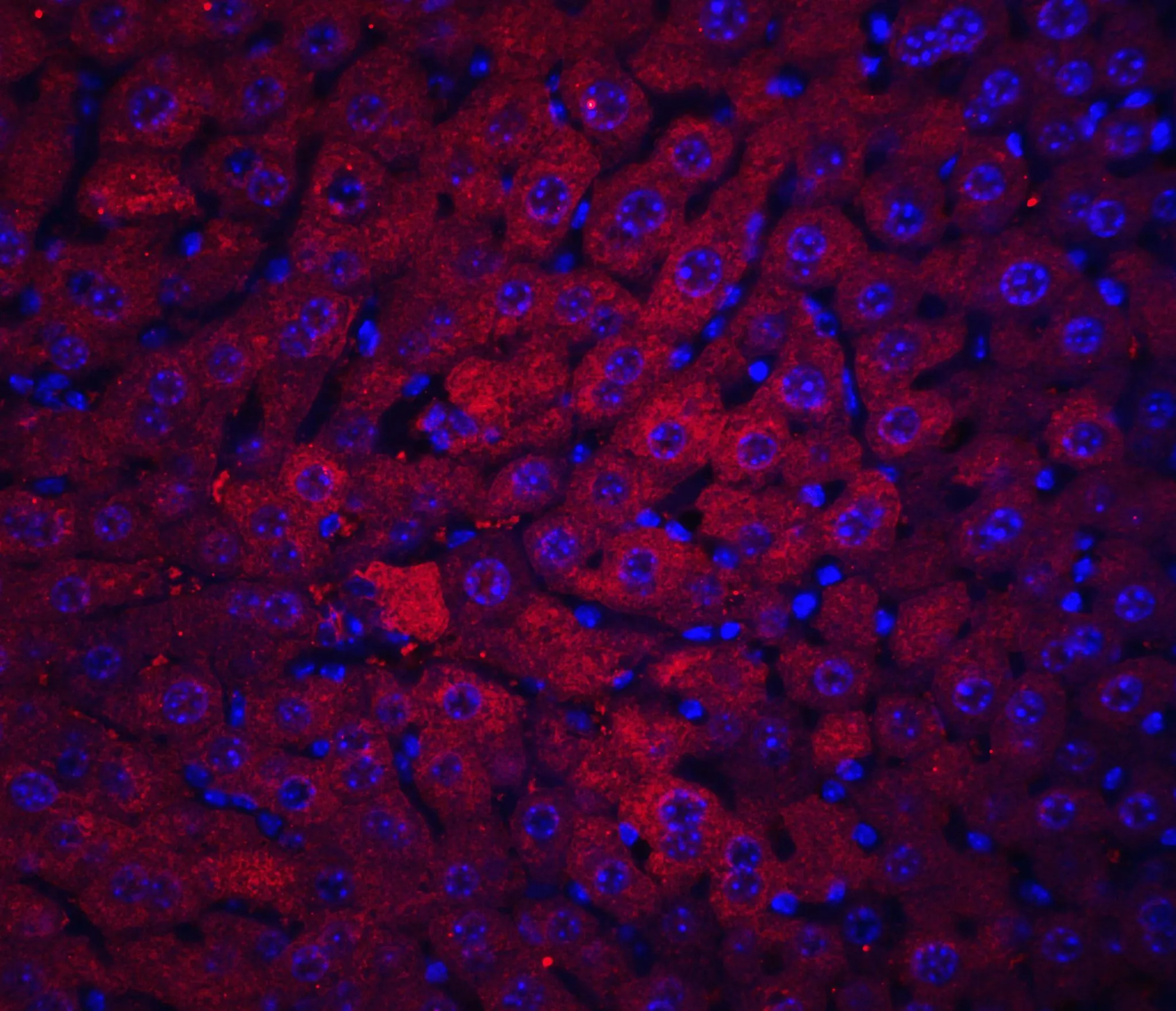
IHC-P analysis of mouse liver tissue using GTX85483 DRAM antibody. Red : Primary antibody Blue : DAPI Dilution : 20 microg/ml
DRAM antibody
GTX85483
ApplicationsWestern Blot, ELISA, ImmunoHistoChemistry, ImmunoHistoChemistry Paraffin
Product group Antibodies
ReactivityHuman, Mouse, Rat
TargetDRAM1
Overview
- SupplierGeneTex
- Product NameDRAM antibody
- Delivery Days Customer9
- Antibody SpecificityThis antibody is specific for DRAM N-Terminus
- Application Supplier NoteWB: 0.5 - 2 microg/mL. IHC-P: 2.5 microg/mL. *Optimal dilutions/concentrations should be determined by the researcher.Not tested in other applications.
- ApplicationsWestern Blot, ELISA, ImmunoHistoChemistry, ImmunoHistoChemistry Paraffin
- CertificationResearch Use Only
- ClonalityPolyclonal
- Concentration1 mg/ml
- ConjugateUnconjugated
- Gene ID55332
- Target nameDRAM1
- Target descriptionDNA damage regulated autophagy modulator 1
- Target synonymsdamage-regulated autophagy modulator; DNA damage-regulated autophagy modulator protein 1; DRAM
- HostRabbit
- IsotypeIgG
- Protein IDQ8N682
- Protein NameDNA damage-regulated autophagy modulator protein 1
- Scientific DescriptionDamage-regulated autophagy modulator (DRAM) is a p53 target gene encoding a lysosomal protein that induces autophagy, a process that degrades cytosolic proteins and organelles. It has been suggested that activation of DRAM by p53 is simultaneous to the activation by p53 of one or more proapoptotic genes such as PUMA, Bax, etc., and that the signaling pathways regulated by these genes together promote a full cell death response. By itself, DRAM cannot induce apoptosis, but the fact that it is inactivated in certain cancers highlights the importance of DRAM and suggests that autophagy may play a more important role in cancer than initially suspected. At least two different isoforms of DRAM are known to exist.
- ReactivityHuman, Mouse, Rat
- Storage Instruction-20°C or -80°C,2°C to 8°C
- UNSPSC12352203

